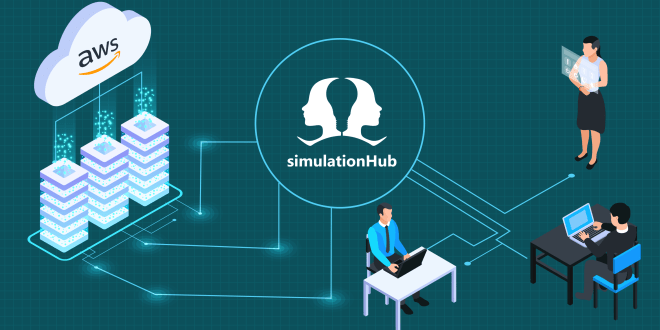Welcome to our comprehensive guide on JavaScript Basics in the Cloud and how you can leverage serverless architectures to build scalable web applications. JavaScript is a powerful and versatile programming language that plays a pivotal role in modern web development. In this blog, we will delve into the fundamentals of JavaScript and explore how it can be combined with cloud-based serverless architectures to create robust and scalable web applications.
Understanding JavaScript: The Language of the Web
JavaScript, often abbreviated as JS, is a high-level programming language that allows developers to add interactivity and dynamic elements to websites. Developed by Brendan Eich in 1995, JavaScript has since evolved into one of the most widely used languages for front-end and back-end web development. It provides essential functionalities to enhance user experience and perform various tasks on web pages.
JavaScript is a versatile language with a rich ecosystem of libraries and frameworks, such as Node.js, React, and Angular, making it a go-to choice for developers worldwide.
Exploring the Basics of JavaScript
Let’s dive into the foundational aspects of JavaScript:
Variables and Data Types
In JavaScript, variables are used to store data, and data types define the kind of value a variable can hold. Common data types in JavaScript include strings, numbers, booleans, arrays, and objects.
Operators and Expressions
Operators are symbols that perform operations on variables and values. JavaScript supports arithmetic, comparison, logical, and assignment operators, which allow developers to create complex expressions to manipulate data.
Conditional Statements
Conditional statements, like if-else and switch, enable developers to make decisions in the code based on certain conditions. This helps control the flow of the program and execute specific actions depending on the inputs or other factors.
Loops
Loops, such as for, while, and do-while, allow developers to repeat a set of instructions multiple times. This is useful when dealing with arrays or performing repetitive tasks.
Functions
Functions are reusable blocks of code that perform specific tasks. They help in organizing the code, making it easier to maintain and understand. JavaScript supports both built-in and user-defined functions.
Objects and Object-Oriented Programming (OOP)
JavaScript is an object-oriented language, allowing developers to create objects that encapsulate data and behavior. Objects and OOP concepts enable the construction of more complex and modular applications.
The Advantages of Serverless Architectures
Traditional server-based web applications require infrastructure management, which can be time-consuming and costly. Enter serverless architectures, a cloud-based approach that takes away the burden of server maintenance, allowing developers to focus on writing code.
Scalability and Cost Efficiency
Serverless architectures automatically scale based on demand, ensuring your web app can handle varying levels of traffic. You only pay for the resources used during execution, making it cost-efficient for startups and large-scale applications alike.
Simplified Deployment and Maintenance
With serverless platforms, deployment and maintenance are streamlined. You can quickly deploy updates or new features without worrying about server configuration or downtime.
Increased Flexibility and Development Speed
Serverless architectures provide developers with the flexibility to choose the best-suited services for their applications. This freedom allows for faster development cycles and experimentation.
Integrating JavaScript with Serverless Architectures
To leverage serverless architectures effectively, developers often use JavaScript in conjunction with cloud platforms like AWS Lambda, Azure Functions, or Google Cloud Functions.
Handling HTTP Requests
With serverless functions, you can easily handle HTTP requests and responses. This enables you to build API endpoints without managing complex server setups.
Data Storage and Retrieval
Integrating JavaScript with serverless services allows seamless data storage and retrieval from databases like Amazon DynamoDB or Firebase Firestore.
Real-time Web Applications
Using JavaScript with serverless architectures, developers can create real-time web applications, such as chat apps or collaborative tools, with the help of WebSockets and event-driven triggers.
Common Security Considerations
Security is of paramount importance when building web applications. Here are some security considerations for JavaScript-based serverless applications:
Input Validation
Ensure proper input validation to prevent common security vulnerabilities like SQL injection and Cross-Site Scripting (XSS) attacks.
Identity and Access Management
Implement strong identity and access management controls to restrict unauthorized access to your serverless functions and data.
Encryption and Secure Communication
Encrypt sensitive data and use secure communication protocols (HTTPS) to protect data transmission.
Final Words
JavaScript is the backbone of modern web development, and when combined with serverless architectures, it unlocks unparalleled scalability and cost-efficiency. By mastering the basics of JavaScript and embracing cloud-based serverless solutions, developers can build web applications that effortlessly scale to meet the demands of the digital era.
Frequently Asked Questions
1. Is JavaScript the only language for serverless applications?
While JavaScript is widely used for serverless applications, other languages like Python, Java, and Go are also supported by various cloud providers.
2. What are the cost implications of serverless architectures?
With serverless, you pay only for the actual execution time of your functions, making it cost-efficient, especially for low-traffic applications.
3. Can I use serverless for large-scale applications?
Yes, serverless architectures can handle large-scale applications with ease, as they automatically scale based on demand.
4. Are there any drawbacks to serverless architectures?
Serverless architectures may introduce some cold start latency, and certain applications with high computational needs may not be the best fit.
5. How can I monitor the performance of my serverless applications?
Cloud providers offer various monitoring and logging tools to track the performance and behavior of your serverless functions.
 webfily
webfily



